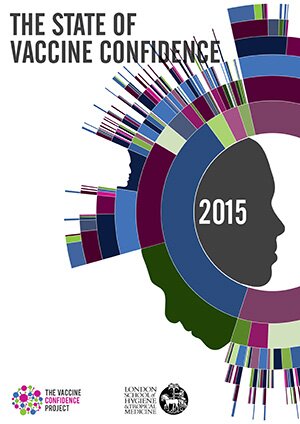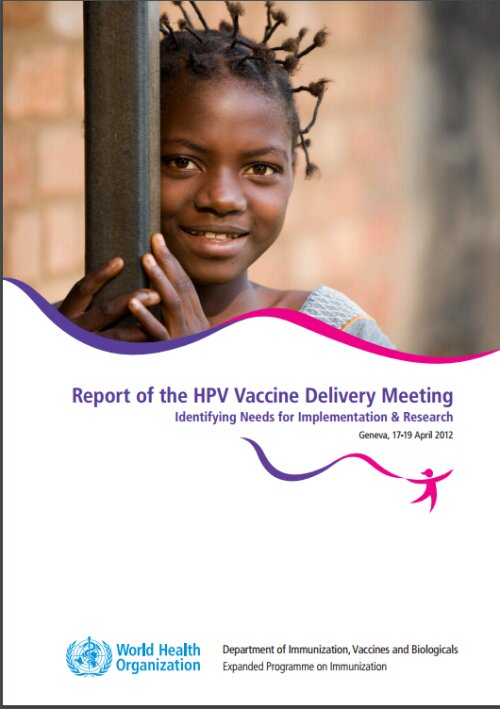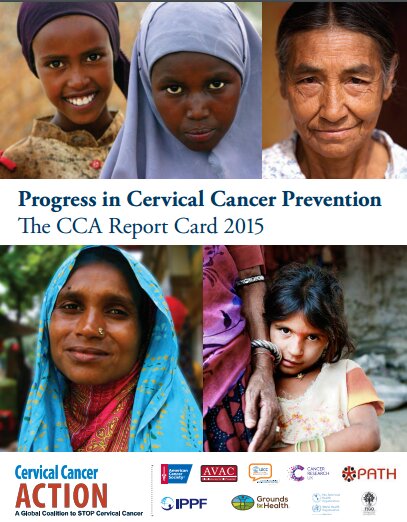The State of Vaccine Confidence

- Analysis of a number of vaccine confidence issues and the paths to their resolution over the past decade, including and beyond polio.
- Options for monitoring and measuring public confidence to detect waning confidence early and identify issues of concern.
- Strategies that have had positive impacts in engaging populations to build trust and confidence.
- Description of the Vaccine Confidence Index (VCI) global mapping project.
Vaccine Confidence Report 2016:
This year’s study surveyed 65,819 individuals across 67 countries, investigating confidence in vaccine safety and effectiveness, as well as perceptions of vaccine importance and compatibility with religious beliefs. The analysis, published in EBioMedicine, was conducted in collaboration with Imperial College London and the National University of Singapore, and the data was collected by WIN/Gallup International Association.
Country reports
HPV Vaccination in Africa: lessons learned from a pilot program in Uganda (2011) (.pdf, 1 MB):
Uganda is one of the countries chosen by PATH as a site for the HPV Vaccines project. In Uganda, cervical cancer accounts for 40 percent of all cancers recorded by the cancer registry, and over 80 percent of women with cervical cancer are diagnosed with advanced disease. Through a demonstration project conducted in 2008–2009 in selected districts, HPV vaccine was made available to more than 10,000 girls.
HPV Vaccination in Latin America. Lessons learnt from a pilot program in Peru (2010) (.pdf, 1 MB):
Peru has some of the highest cervical cancer incidence and mortality rates of the Latin American and Caribbean region. Through a demonstration project in 2008–2009 in selected areas of the country, HPV vaccine was made available to all girls aged nine years or older in grade five.
HPV Vaccination in Southeast Asia. Lessons learned from a pilot program in Vietnam (2012) (.pdf, 2.3 MB)
Through a vaccination demonstration project carried out from 2008 to 2010, more than 6,300 girls aged 11 years (or in grade 6) received all three doses of the vaccine. Two vaccine delivery strategies were implemented:
- In the first, vaccinations were conducted at schools for girls enrolled in grade 6, with active outreach later in health centers to vaccinate girls who had been missed.
- In the second, girls aged 11 years were vaccinated at commune health centers.
Anishinaabek Cervical Cancer Screening study, Canada (2015) (.pdf, 1.7 MB)
First Nations women in Ontario (Canada) are approximately twice as likely to get cervical cancer as the mainstream population Picture Click on Report cover image above to view a copy. The Anishinaabek Cervical Cancer Screening Study (ACCSS) is a research study based in Thunder Bay, Ontario, Canada. Researchers think that by increasing cervical cancer screening in First Nations communities, the number of new cases of cervical cancer will decrease. ACCSS aims to find a culturally safe way to promote cervical screening in these Indigenous communities. Health care providers and women from these communities stress that culturally sensitive education is needed.
WHO Cervical Cancer country profiles (2021) (.pdf, 4.4 MB)
The aim of the WHO cervical cancer country profiles is to bring out the current status of cervical cancer for each of the WHO Member States (194 total) curated from multiple data sources. These profiles help to establish a baseline for the country and support monitoring trends toward the achievement of the Elimination of cervical cancer as a public health problem.
The profiles include the following information:
- burden of cervical cancer: cervical cancer incidence, cumulative risk of cervical cancer, total number of deaths and trends in deaths, and cervical cancer mortality to incidence;
- primary prevention: HPV vaccination programme coverage and programme details, related risk factors including tobacco use prevention, condom use at last high-risk sex and HIV incidence;
- secondary prevention: national screening programme for cervical cancer details and cervical cancer screening rate;
- treatment and supportive care: national guidelines for cervical cancer management, cancer diagnosis and treatment service availability, availability of specialized medical staff, palliative care.
Report of the HPV Vaccine Delivery Meeting
Report of the HPV Vaccine Delivery Meeting (.pdf, 466 KB):
- At the end of 2011, 40 countries had introduced HPV vaccine in their national immunization schedule.
- In 2012, WHO organised a meeting to share an update on HPV vaccine introduction issues and the activities of key partners and stakeholders and to determine outstanding questions that need to be addressed for optimal HPV vaccine delivery in countries.
- The meeting brought together immunization, adolescent health, cancer, and education programme specialists from a range of agencies, non-governmental organizations (NGOs), and academic institutions.
- The report summarizes key points from presentaions and plenary discussions at the meeting.
HPV Vaccination across Europe
HPV Vaccination across Europe (Pdf, 716 KB)
Reports of the Cervical Cancer Initiative

Progress in Cervical Cancer Prevention. The CCA Report Card 2015 (.pdf, 4 MB)
This report assesses global readiness to fight cervical cancer using the latest approaches and technologies, especially in regions where the disease is a common killer. It underscores the urgent need for the global community to prioritize cervical cancer prevention and control on global health and development agendas.
Current Initiatives in Cervical Cancer Prevention (.pdf, 362 KB)
This fact sheet summarizes PATH's current work in cervical cancer prevention. Since PATH began to focus on cervical cancer in 1991, its portfolio has expanded to cover the full range of technologies and approaches for the prevention of cervical cancer, including human papillomavirus vaccination.